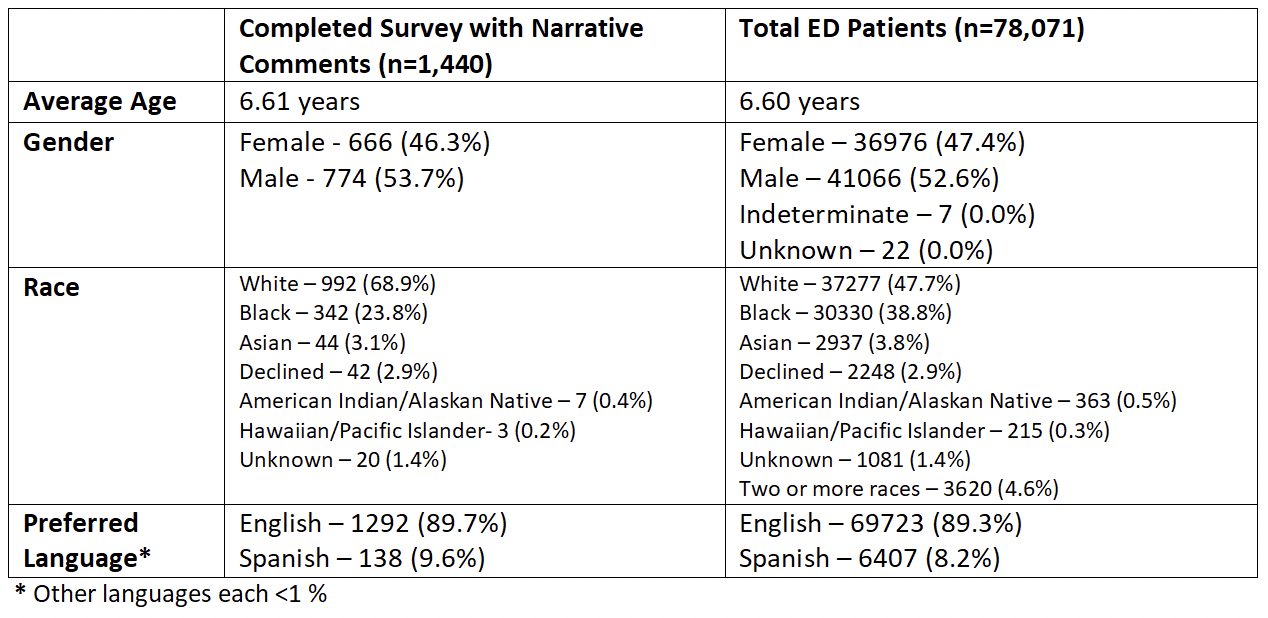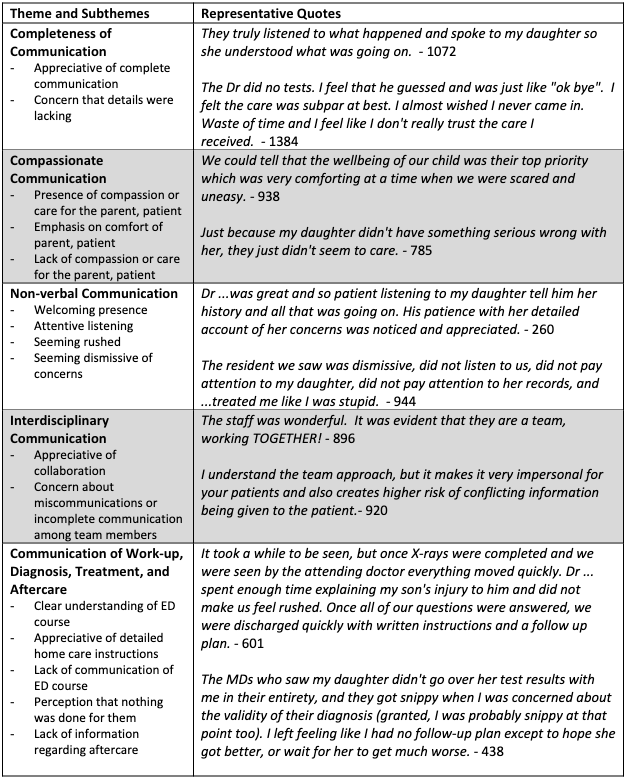Emergency Medicine 1
Session: Emergency Medicine 1
415 - Perspectives on Communication in the PED via Qualitative Analysis of Patient Experience Surveys
Friday, April 25, 2025
5:30pm - 7:45pm HST
Publication Number: 415.6153
Emily M. Hogikyan, Medical College of Wisconsin, Milwaukee, WI, United States; Lindsay H. Boles, Medical College of Wisconsin, Bayside, WI, United States; sri Chinta, Medical College of Wisconsin, Milwaukee, WI, United States; Jessica L.. Schnell, Medical College of Wisconsin, Milwaukee, WI, United States; Sarah E.. Thill, Medical College of Wisconsin, Milwaukee, WI, United States

Emily M. Hogikyan, MD (she/her/hers)
Fellow
Medical College of Wisconsin
Milwaukee, Wisconsin, United States
Presenting Author(s)
Background: Pediatric Emergency Departments (PED) care for a diverse patient population with varying levels of health literacy and acuity of conditions. Communication is vital for ensuring appropriate diagnosis, treatment, and adherence to indicated follow-up care in our unique practice.1,2 To our knowledge, the literature has not explored PED patient perspectives on communication.
Objective: In this study, we seek to characterize the patient and family experience of communication in the PED through qualitative analysis of comments from patient experience surveys.
Design/Methods: This was a single-center, qualitative study of surveys from July 2023 to June 2024. Surveys are available in English and Spanish and are distributed via phone, text, and e-mail to a subset of discharged patients to collect feedback. Surveys include Likert-scale questions and an option for narrative comments.
A total of 5,078 surveys were completed (13.0% response rate), and of these, 1,440 included narrative comments which were analyzed for this study. Narrative comments were de-identified prior to review. Thematic analysis of comments was performed by the team of coders. First, a shared definition of communication-related comments was developed. Then, communication-related comments were coded and combined into themes and subthemes in an iterative, inductive fashion.
Results: On initial review, 596 (41%) of all comments were classified as communication-related. Six main themes emerged from the communication-related comments: completeness, compassion, non-verbal, interdisciplinary, and understanding of work-up, diagnosis, treatment, and aftercare. Comments described positive and negative experiences within each theme. Table 1 summarizes demographics. Table 2 includes themes, subthemes, and representative quotes.
Conclusion(s): Survey analysis revealed key themes regarding communication with the medical team, and the frequency of communication-related comments suggests an important contribution to the patient experience. Praise for the presence of these themes, along with critiques of their absence, shows that families seek and value these aspects of communication. Improvement in these areas of communication could be targeted with professional development and operational changes in order to better serve our patient population.
Ref:
1.Blackburn, J., Ousey, K., & Goodwin, E. (2019). Information and communication in the emergency department. International emergency nursing, 42, 30-35.
2.Crane, J. A. (1997). Patient comprehension of doctor-patient communication on discharge from the emergency department. The Journal of emergency medicine, 15(1), 1-7.
Table 1
 Demographics of Survey Respondents Compared with Total ED Visits, July 2023-June 2024
Demographics of Survey Respondents Compared with Total ED Visits, July 2023-June 2024Table 2
 Themes, Subthemes, and Representative Quotes
Themes, Subthemes, and Representative QuotesTable 1
 Demographics of Survey Respondents Compared with Total ED Visits, July 2023-June 2024
Demographics of Survey Respondents Compared with Total ED Visits, July 2023-June 2024Table 2
 Themes, Subthemes, and Representative Quotes
Themes, Subthemes, and Representative Quotes
